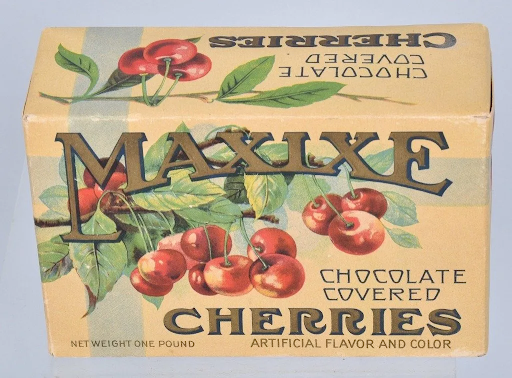The Cherry Pickers of Lower Roxbury: Wage-Earning Women from the Women’s Voter Registers
Many of the women in Lower Roxbury and the South End registering to vote for the first time in 1920 supported themselves and their families working at the United Drug Co. factory.
By Molly Copeland
In Boston today, when someone talks about “cherry picking,” they are most likely complaining about someone cherry picking facts, selecting information that best supports their argument and ignoring or downplaying those that contradict them. Or if you mention a “cherry picker,” you are likely referring to the piece of heavy machinery that lifts workers up in a bucket at the end of a hydraulic arm so they can reach telephone wires or tree limbs.
But if we were to go back one hundred years, Boston in the 1920s was home to cherry pickers of a different kind, women who worked at the United Drug Company factory in the South End. The United Drug Company, founded in 1903 by Louis Kroh Liggett, manufactured nonprescription drugs and operated drugstores across the country under the trademark Rexall until the 1970s. Along with making nonprescription drugs, United Drug Co. also manufactured candy, perfume, stationary, rubber goods, and food products. Advertisements for Rexall products in newspapers at the time enticed buyers with jars of Ballardvale Whole Cherries and boxes of Maxixe Cherries, “big, red, ripe Maraschino cherries in liquid creme, coated with rich chocolate.” While cherry fruits appeared in candies and food products, cherry bark was the main ingredient in Rexall’s cough syrup.
The United Drug Co. factory at 43 Leon Street, now a part of Northeastern University’s campus, employed many residents from the South End and Lower Roxbury. Of the many wage-earning women who registered to vote from Boston’s Ward 13, eleven listed their occupation as “cherry picker” or “cherry pitter” at the company’s factory. Two of these women, Dorothy J. Banks and Ruth B. Allen, both twenty-one years old, went together to register to vote on October 11, 1920.
Dorothy, a Black woman from North Carolina, lived at 42 Windsor Street in Lower Roxbury in the third floor apartment with Rosa L. Lloyd and her husband Henry. Rosa, a Black woman from Richmond, Virginia, registered to vote on the same day, standing three women ahead of Dorothy in line. Dorothy’s fellow cherry picker Ruth was born in Boston’s West End, and had since moved to 35 Westminster Street at the intersection with Windsor Street. While parts of Windsor Street still exist, much of the area was demolished in the 1960s to make room for the proposed Inner Belt Highway I-695, and later became Melnea Cass Boulevard when the highway project was permanently halted. In 1920, Westminster Street ran along one side of Madison Square, now the site of Madison Park High School.
The transcribed dataset of women’s voter registers from 1920 offers information about novel occupations and industry in Boston, but more importantly it gives a window into the lived experiences and relationships among the working women of the city. Living catty-corner to each other at Windsor and Westminster, one imagines that Ruth and Dorothy shared more than just an age and occupation. These young women shared a community in Lower Roxbury, perhaps friends and pastimes, and the aspiration to vote. With making these datasets available, the Mary Eliza Project hopes to uncover more of these connections and catch glimpses into the rich lives of the women who lived and worked in Boston a century ago.
Further Reading:
- History of Rexall, “Good Health to all from Rexall” blog
- United Drug company products collection, Northeastern University Archives and Special Collections
- Southwest Corridor Park History, Massachusetts Department of Conservation and Recreation Southwest Corridor Park Conservancy
- Lower Roxbury Black History Project, Northeastern University Archives and Special Collections
Molly Copeland is a dual degree graduate student in History and Archives Management at Simmons University. You can follow her at mollypcopeland.com.





